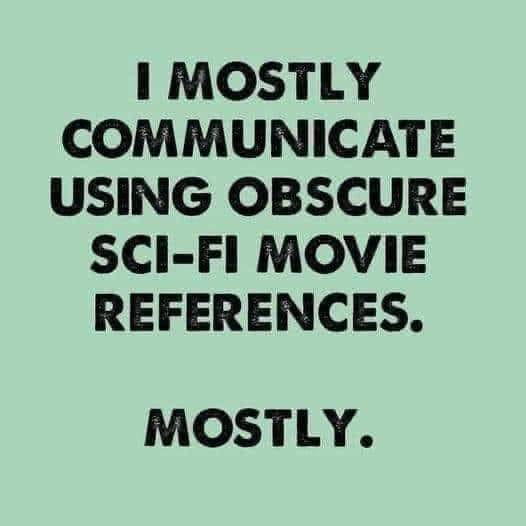The Long View: Rainbow Six
These were the only two of Tom Clancy's books that John reviewed. I was in a big Tom Clancy phase at the time John wrote these, so I found the reviews interesting. They hold up well.
Rainbow Six
by Tom Clancy
G.P. Putnam's Sons, 1998
740 pages, $27.95
ISBN: 0-399-14390-4
Reviewed by John J. Reilly
Damn these books are long. This is only the second Tom Clancy novel I have ever read (there are nine others, plus a lot of nonfiction), so I am not really in a position to say how repetitious they are. Still, there are a number of elements common to this book and "Executive Orders," the other one I am familiar with. You have terrorist attacks involving children as hostages. You have biological warfare, though this time with a genetically engineered super-bug rather than mere off-the-shelf Ebola. You also have some familiar characters: CIA special operations officers John Clark and his son-in-law Domingo Chavez are the principal heroes. Be this as it may, there are novelties, particularly in the scale of the threat to which the heroes react and the motives of the villains. What we have here is a plot by deep ecologists to end the world in the year 2000, elements that very likely are new to Clancy novels. We also have just a whiff of the suggestion that what this planet needs is a planetary police.
No one, I suspect, reads Tom Clancy for the characterization. The men have guns and the women have babies, and the interior monologues of the characters differ only in that foreigners never use foul language while thinking to themselves. What people do read these books for is the action sequences and the descriptions of the latest military hardware. These are extremely lucid and often illuminating. The forces of good here are represented by a secret multinational anti-terrorist organization known as "Rainbow," and the book is largely built around five hostage-taking incidents of ever-greater scale and daring. These incidents are, really, the sort of training scenarios that SWAT teams study, and Clancy has the narrative form for these encounters down to a science.
He covers everything, from training to weaponry to reconnaissance of hostage sites. There is also a great deal about negotiation and psychological manipulation, as explained by Rainbow's resident psychological profiler. I don't know whether there really is a gizmo that will let you track human heartbeats on the other side of a wall, and I rather doubt that even the CIA has wireless computer systems that work quite as smoothly as the ones described here. Still, maybe the only way to study this kind of thing is to begin with what is supposed to happen when everything goes right. As for how execution falls short in practice, you can read about that in the newspapers.
Engrossing though all the descriptions of bad-guys' heads blowing apart like melons may be, perhaps the most interesting feature of the book is the change in the nature of the forces of evil. Ten years ago, the notion of a private group (in this case, an international bio-technology company) seeking to reduce the human race to a tiny fraction of its current numbers was confined to the more tongue-in-cheek "007" movies. Since then we have seen at least one religious cult, the Aum Shinrikyo, attempt just that by trying to start a nuclear war. (That's what all that anthrax and poison gas was for.) Closer to home, we have seen the development of ideologies that would make such a project at least plausible to the secular mind. Curiously, Clancy does not use the term "deep ecology" (though someone apparently told him about "game face"). Still, it is pretty clear that his conspirators live in the mental universe of the deep ecologists, one in which the human race is a parasitic species whose population must be radically reduced in order to save Mother Gaia. Considering the degree of false piety that still surrounds ecological issues, it is somewhat startling to see the fictional president of the Sierra Club portrayed as the unknowing fellow-traveler of the forces of absolute evil.
Just how absolute the evil is we come to realize when it is contrasted with ordinary evil, the sort of evil that Clancy's heroes contended with in earlier novels. I don't know whether Iosef Andreyevich Popov is a regular from Clancy's Cold War stories, but in this book he is a former Soviet agent, downsized from the KGB, who has taken to freelancing for a living. In this capacity, he is hired by the deep ecologists to stir up some seemingly senseless terrorist activity. The idea is to induce the authorities at the Sydney Olympics to hire a certain security consulting firm, which will then work the deep ecologists' wicked will on the unsuspecting international crowds. When the disease breaks out worldwide, the bio-technology company will finish the job by distribution of a live-virus vaccine that is just a little too live.
Now Popov has his faults. He is a murderer. He is a liar. He is a thief. These, however, are merely human failings, which in no way prepare him for the sick horror he experiences when he realizes what all those pleasant Americans at his employer's hermetically sealed base in Kansas are up to. Even with the odd developments of the past decade, it is still hard to credit that any group would seriously try to do what the deep ecologists in this book try to do. Nevertheless, Clancy has put his finger on an element in ecological philosophy to which the famous characterization by G.K. Chesterton might fittingly apply: "that extreme evil that seems innocent to the innocent."
It is not giving much away to reveal that the world does not end in this book. The die-off projections of the villains are sufficiently detailed to form the backbone of a novel, if anyone is inclined to write it. The bad guys come to a poetic bad end, though one with enough uncertainty to allow of a rematch with the chief malefactors. If the story does any harm, it will be to make some people a bit suspicious of vaccines. Clancy has now moved beyond tales of the Cold War and even of interstate conflict. I am curious to see where he takes us next.
Copyright © 1998 by John J. Reilly

Rainbow Six (A Jack Ryan Novel) By Tom Clancy



Comments ()